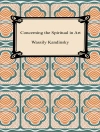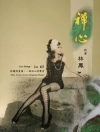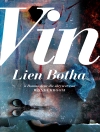While the topic of queer sexuality in imperial Russia and the Soviet Union has been investigated for decades by scholars working in the fields of sociology, history, literary studies, and musicology, it has yet to be studied in any comprehensive or systematic way by those working in the visual arts. Queer(ing) Russian Art: Realism, Revolution, Performance is meant to address this lacuna by providing a platform for new scholarship that connects ‘Russian’ art with queerness in a variety of ways. Situated at the intersection of Visual Studies and Queer Studies and working from different theoretical and disciplinary perspectives, the contributors expose and explore the queer imagery and sensibilities in works of visual art produced in pre-Soviet, Soviet and post-Soviet contexts and beneath the surface of conventional histories of Russian and Soviet art.
Tabla de materias
Acknowledgements
Note on Transliteration
Introduction
Brian James Baer and Yevgeniy Fiks
Part One. Theoretical Framings
1. Between Semiotics and Phenomenology: The Problem of Queer Beauty
Brian James Baer
Part Two. Queer Beauty in Context
2. “In Appearance, Both a Lad and Lass”: Images of Androgyny in Eighteenth-century Russian Art
Olga Khoroshilova (translated by Aleksei Grinenko)
3. The Queer Opacity of Alexander Ivanov’s Nudes: Between Biblical Themes and Greek Love
Nikolai Ivanov (translated by Aleksei Grinenko)
4. Prostitutes, Pierrots, and Priapus: The Queer Modernism of Konstantin Somov
Brian James Baer
5. Modernism as the Uncanny of Stalinism: On Alexander Deineka’s Wartime Drawings
Gleb Napreenko (translated by Aleksei Grinenko with Brian James Baer)
6. Carnivalesque Carnality: The Queer Potential of Sergei Eisenstein’s Homoerotic Drawings
Ada Ackerman
7. Moscow Conceptualism’s Erotic Objects
Yelena Kalinsky
8. Queering Socialist Realism: The Case of Georgy Guryanov
Maria Engström (translated by Ryan Green)
9. A Russian Schizorevolution?: Observations on the New Academy of Fine Arts and Queer Issues in the Late 1980s and Early 1990s
Andrei Khlobystin (translated by Aleksei Grinenko)
10. The Lure of Implied Transgression as Revolutionary Retrospective: The Illicit as la Belleza in Bella Matveeva’s Art
Helena Goscilo
11. Sexual and Gender Dissent in a Bipolar World: Georgy Guryanov and Vladislav Mamyshev-Monroe
Andrey Shental
12. “My Nationality Is My Sexuality”: The Post-Soviet, Diasporic, Non-Russian Queerness of Babi Badalov
Roman Osminkin (translated by Innokenty Grekov)
Part Three. Beyond Queer Beauty? Contemporary Post-Soviet Perspectives on Queer(ing) Art, Art History, and Artists
13. Architecture, Outer Space, Sex: Queering the Kollontai Commune in 1970s Frunze
Georgy Mamedov and Oksana Shatalova (translated by Aleksei Grinenko with Adrienn Hruska)
14. Soviet Union, July 1991
Yevgeniy Fiks
15. LGBT Violence and the Limits of Realism: Polina Zaslavskaya’s Material Evidence
Victoria Smirnova-Maizel (translated by Ryan Green)
16. The Battle over Names: Radical Queer on the Russian Activist Art Scene
Seroe Fioletovoe (with translations by Innokenty Grekov)
17. Queer in the Land of the Bolsheviks, or the Archeology of Dissent
Nadia Plungian (translated by Aleksei Grinenko)
18. A Queer (Re)Claiming of Russian and Soviet Art: An Interview with Slava Mogutin
19. “Queer and Russian Art?”: A Conversation between Katharina Wiedlack and Masha Godovannaya
20. Queering Sexual Minorities, : An Interview with Yevgeniy Fiks
Index
Sobre el autor
Yevgeniy Fiks is a Moscow-born New York-based artist, author, and organizer of art exhibitions. Yevgeniy has produced many projects on the subject of the Post-Soviet dialog in the West. Fiks’ books include Moscow (Ugly Duckling Presse, 2013), Soviet Moscow’s Yiddish-Gay Dictionary (Cicada Press, 2016), and Mother Tongue (Pleshka Presse, 2018).












